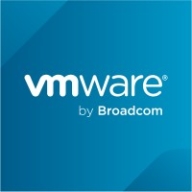

Find out in this report how the two Java Frameworks solutions compare in terms of features, pricing, service and support, easy of deployment, and ROI.
| Product | Market Share (%) |
|---|---|
| Spring Boot | 38.9% |
| Spring MVC | 3.8% |
| Other | 57.300000000000004% |


| Company Size | Count |
|---|---|
| Small Business | 19 |
| Midsize Enterprise | 9 |
| Large Enterprise | 17 |
| Company Size | Count |
|---|---|
| Small Business | 5 |
| Midsize Enterprise | 2 |
| Large Enterprise | 11 |
Spring Boot is a tool that makes developing web applications and microservices with the Java Spring Framework faster and easier, with minimal configuration and setup. By using Spring Boot, you avoid all the manual writing of boilerplate code, annotations, and complex XML configurations. Spring Boot integrates easily with other Spring products and can connect with multiple databases.
How Spring Boot improves Spring Framework
Java Spring Framework is a popular, open-source framework for creating standalone applications that run on the Java Virtual Machine.
Although the Spring Framework is powerful, it still takes significant time and knowledge to configure, set up, and deploy Spring applications. Spring Boot is designed to get developers up and running as quickly as possible, with minimal configuration of Spring Framework with three important capabilities.
Reviews from Real Users
Spring Boot stands out among its competitors for a number of reasons. Two major ones are its flexible integration options and its autoconfiguration feature, which allows users to start developing applications in a minimal amount of time.
A system analyst and team lead at a tech services company writes, “Spring Boot has a very lightweight framework, and you can develop projects within a short time. It's open-source and customizable. It's easy to control, has a very interesting deployment policy, and a very interesting testing policy. It's sophisticated. For data analysis and data mining, you can use a custom API and integrate your application. That's an advanced feature. For data managing and other things, you can get that custom from a third-party API. That is also a free license.”
Randy M., A CEO at Modal Technologies Corporation, writes, “I have found the starter solutions valuable, as well as integration with other products. Spring Security facilitates the handling of standard security measures. The Spring Boot annotations make it easy to handle routing for microservices and to access request and response objects. Other annotations included with Spring Boot enable move away from XML configuration.”
Spring MVC is a Java web framework built on the Servlet API and has been included in the Spring Framework from the very beginning. It handles web applications that use server-rendered HTML user interface, REST APIs, and much more. The documentation includes Spring MVC, View Technologies, CORS Support, and WebSocket Support.
For baseline information and compatibility with Servlet container and Java EE version ranges please visit the Spring Framework Wiki.
We monitor all Java Frameworks reviews to prevent fraudulent reviews and keep review quality high. We do not post reviews by company employees or direct competitors. We validate each review for authenticity via cross-reference with LinkedIn, and personal follow-up with the reviewer when necessary.